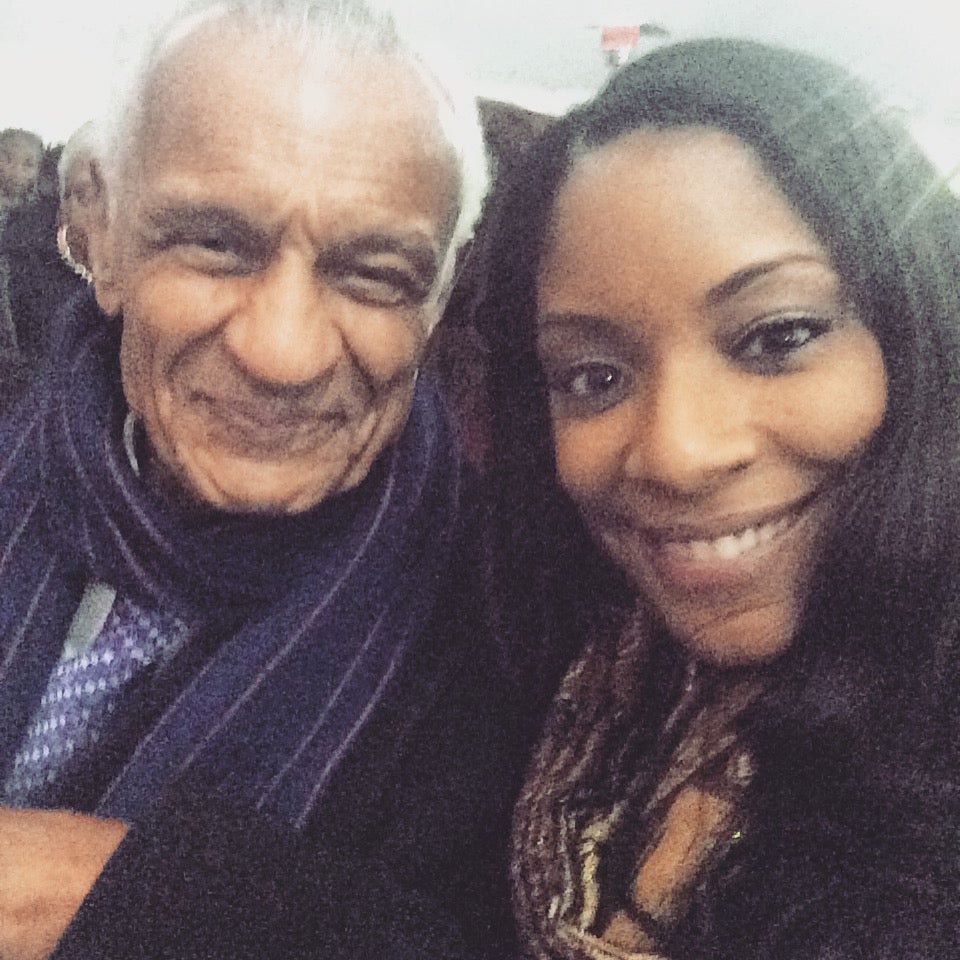
This weekend’s commemoration of the 50th anniversary of Bloody Sunday was full of memorable moments, including my interview on Air Force One with President Obama, but that was only one of the many highlights. Here are more of my top moments from this weekend’s Bridge Crossing Jubilee.
1. Claudette Colvin
Before there was Rosa Parks, there was Claudette. Nine months before Rosa Parks refused to give up her seat, 15-year old Claudette Colvin – who had been learning about Sojourner Truth and Harriet Tubman in school the week before in school – refused to give up her seat to a white passenger on a Montgomery bus. Colvin was arrested and the NAACP and organizers at the time wondered if it was the right moment to launch the long planned boycott.
Organizers worried about optics and respectability politics were concerned that Colvin, who got pregnant, was not the right spokesperson for a boycott and decided to hold off. Nine months later Rosa Parks fit the bill and forever became a household name. This weekend in Selma, Colvin recounted what inspired her to protest the unfair practice of forcing Blacks to sit on the back of the bus and stand if a white passenger entered and the “white section” was full. The presence of Colvin at this weekend’s events was a reminder that so many people who are not included in the history books sacrificed life, limb, and freedom to ensure that Black Americans were treated fairly and had equal rights.
14 Powerful Quotes and Photos from President Obama’s Selma Speech
2. iPads and camera drones flying over the Edmund Pettus Bridge
Bloody Sunday was an example of how powerful images of racial brutality in response to nonviolent protest can change the world. This Sunday, nearly three times as many people, of an even greater variety of races, descended upon Selma for the annual jubilee to commemorate the sacrifice and achievements of those brave marchers who risked their lives for the right to vote. In 2015, chants of #BlackLivesMatter and the sound of Negro spirituals filled the air, while iPads, camera drones, and selfies helped document the day, making it even clearer that a lot has changed in the last half decade.
3. Amelia Boynton Robinson
Fifty years ago, Amelia Boynton Robinson was knocked unconscious on Bloody Sunday. That image circulated around the globe. Now at age 103 – and with a sharp mind and an expressive face – she was on the cover of newspapers around world, holding hands with America’s first Black president.
Flying With President Obama to Witness History in Selma
This full circle moment wasn’t lost on anyone in attendance this weekend and every single time she needed to get through the massive crowds, including Sunday’s march of 85,000 people across the Edmund Pettus Bridge, all that needed to be said was “Amelia coming through” and a path was immediately cleared. Everyone in her presence knew that they wouldn’t be there but for Amelia’s courage.
4. Reverend James Reeb’s wife, children and grandchildren.
In many ways, Jimmy Lee Johnson was to the Selma movement, what Mike Brown is to the #BlackLivesMatter movement. But it was also another killing of a Selma protester, Rev. James Reeb, a white Unitarian minister from Washington, D.C., that challenged a nation to examine its racial conscience. Rev. Reed answered Rev. Martin Luther King, Jr.’s call for clergy to come to Selma to join alongside the protesters after Bloody Sunday was broadcast around the globe.
This weekend, Reeb’s wife, children, and grandchildren were in attendance with a group of women from the Southern Christian Leadership Committe to honor the sacrifice of the minister who died so that Black people could achieve equal rights. It’s the sacrifices of so many, including white allies, that forced the world to take notice, and honoring Reeb’s legacy and marching with thousands on Sunday was a full-circle moment for a family legacy that will always remain in the history books.
5. Reverend C.T. Vivian keeps is short and sweet.
The entire weekend in Selma was full of funny moments with civil rights legends many young people have only seen on screen in things like Eyes on the Prize. Selma is a small town and many of the events were jam packed, meaning that you might have been seated next to your lifelong hero. That’s exactly what happened to me at the Freedom Flame Gala. I was at the table next to legendary SNCC leader Diane Nash and President Obama’s favorite preacher and civil rights legend Rev. C.T. Vivian. During an award ceremony emceed by actor and activist Danny Glover, the night went on a little long with an impromptu comedy routine by Dick Gregory and moving speeches from everyone from Bob Moses to Reverend Bernard Lafayette.
The highlight of my night though was when I joked with Rev. C.T. Vivian about the long speeches, as Glover reminded folks to be mindful of the time as the hour approached midnight. Rev. Vivian smiled at me and said, “I’ll keep mine short!” When it was time for him to go up on stage and accept his award he went to the microphone and simply said, “Thank you!” followed by a winning grin. The crowd erupted in applause and laughter, and when he came back to his seat, I said, “Great job!” to which he replied, “I kept it short!” And then we took a selfie.
Zerlina Maxwell, J.D., is a political analyst and ESSENCE contributor. She writes about national politics, candidates, and specific policy and culture issues including domestic violence, sexual assault, victim blaming and gender inequality.





